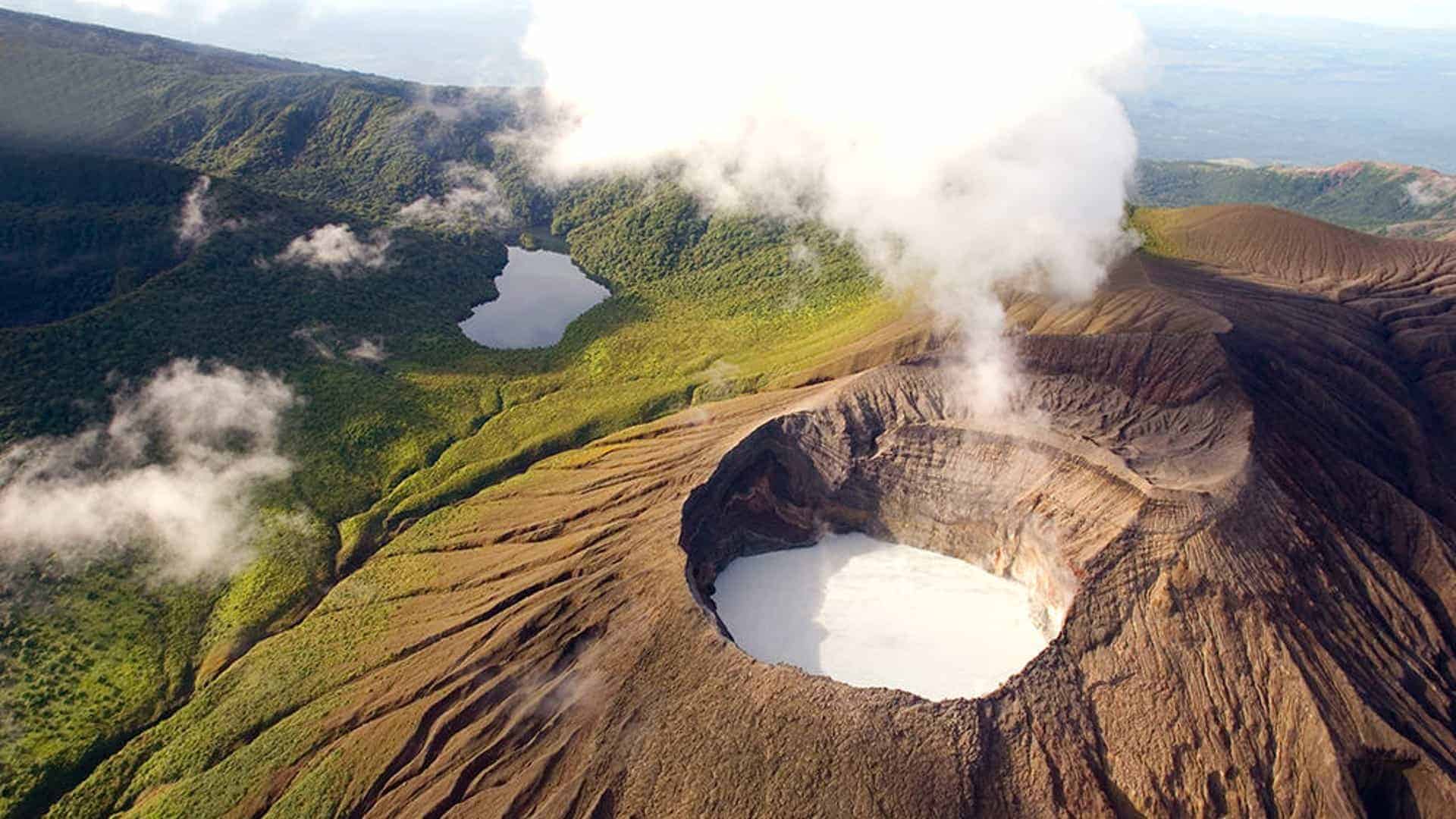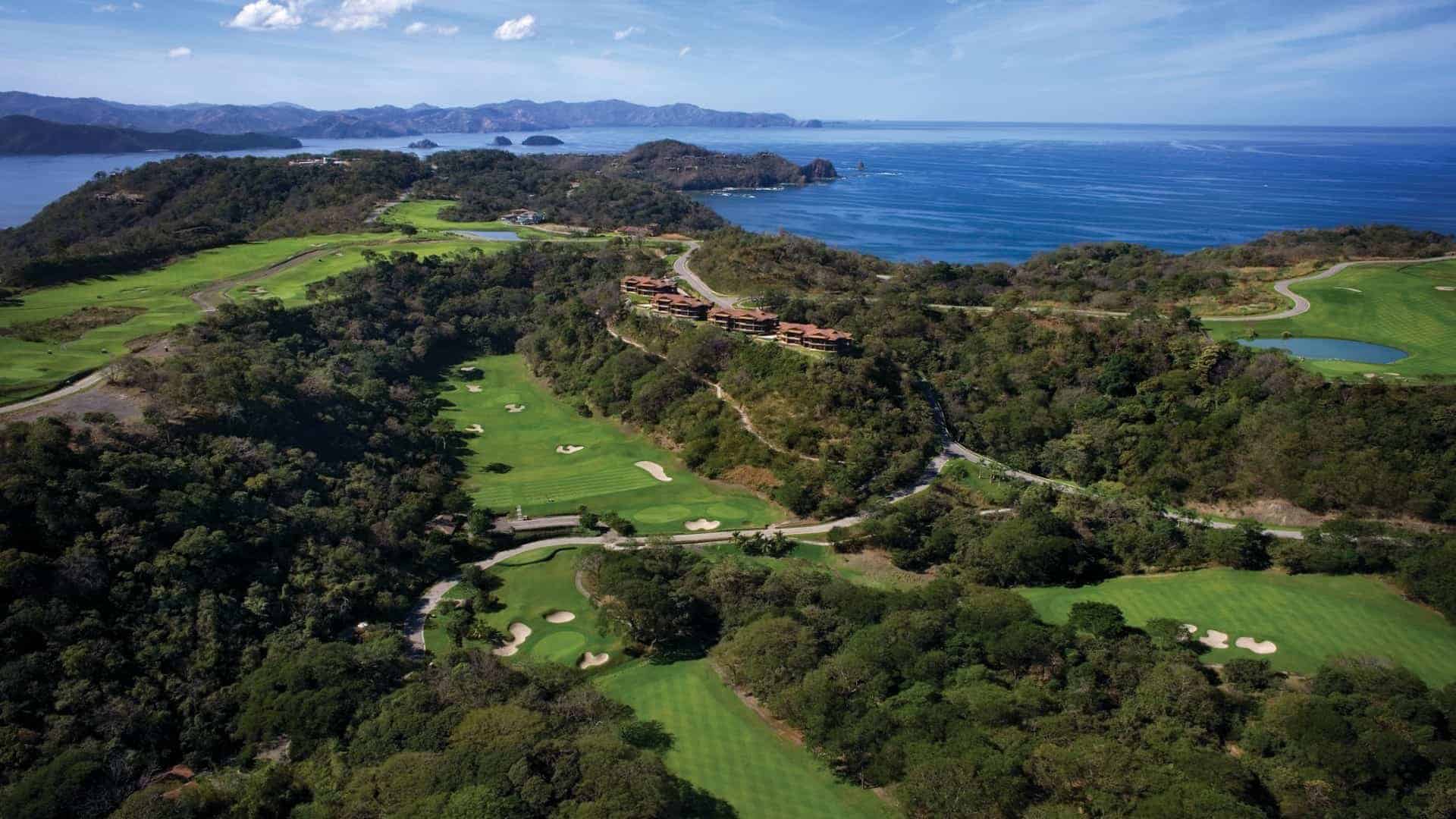Table of contents
Costa Rica, situated in Central America, is renowned worldwide for its fascinating nature and dedication to preserving its unique natural treasures.
This tropical paradise has two unique coastlines: the Pacific and the Caribbean coasts, separated by the Pacific Ocean to the west and the Caribbean Sea to the east. Choosing between the Pacific vs. Caribbean side of Costa Rica might be a challenging dilemma when making travel plans, which is why we’ll examine the significant differences between them. We’ll look at their top attractions and offer suggestions to help you choose which to visit.
Geography and Landscape
The geography and landscape of Costa Rica’s Pacific and Caribbean coasts differ significantly.
The Pacific coast is known for its dramatic beauty, high cliffs, and rocky outcrops. Long lengths of sandy beaches line the coastline, providing breathtaking views of the Pacific Ocean.
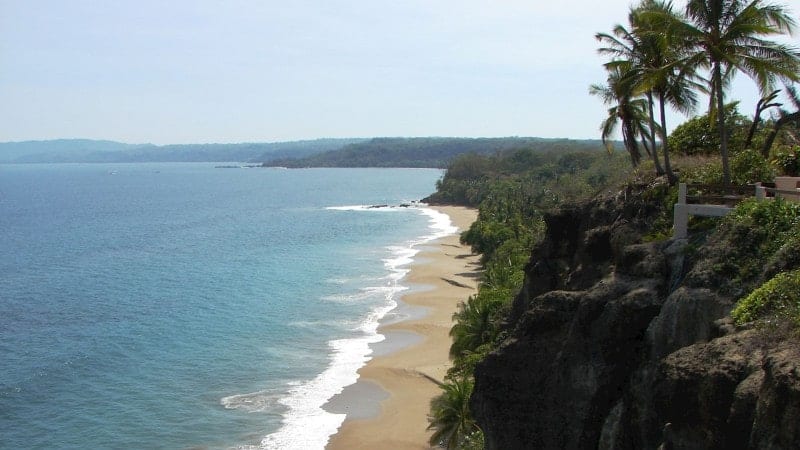
On the other hand, the Caribbean coast features lowland topography that is flatter and covered with dense tropical forests, mangrove swamps, and meandering rivers. The beaches on the Caribbean side are more isolated and shorter and typically have softer sand and lush vegetation all the way to the shoreline.
Climate and Weather
The weather and climate of Costa Rica’s Pacific and Caribbean coasts vary noticeably. A tropical climate with consistently high humidity and warm temperatures prevails on both sides. The seasons and rainfall patterns do differ, though.
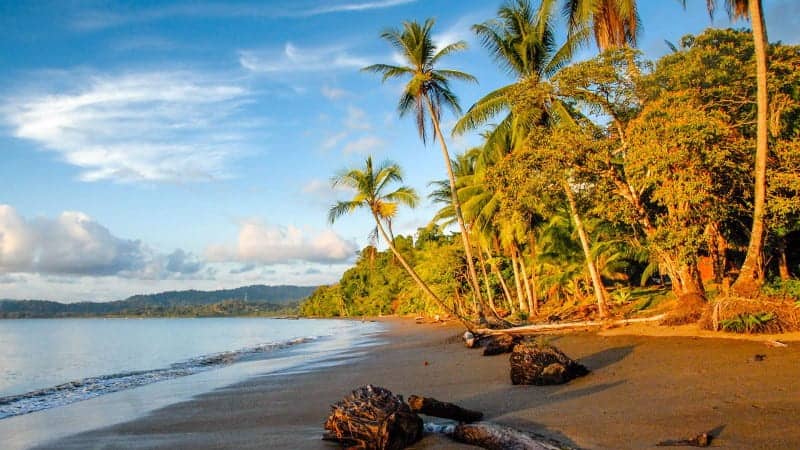
The climate along the Pacific coast is typically drier, with distinct rainy and dry seasons. The dry season typically lasts from December to April and features bright days and little rain. This is the best time for exploring and going to the beach. As opposed to the Pacific coast, the Caribbean coast has a more marked rainy season with higher yearly precipitation. On the Caribbean side, the rainy season typically lasts from May to November and is characterized by increased rainfall and sporadic intense downpours, which help sustain their lush jungles and more vibrant rainforests.
Beaches and Water Activities
Visitors can take pleasure in a variety of water sports and unique beach experiences on both Costa Rica’s Pacific and Caribbean coastlines.
Long lengths of sandy shoreline cover the Pacific coast, making for some of the most beautiful beaches in the world. Additionally, the Pacific coast is a surfer’s paradise, drawing surfers of all skill levels to its consistent waves and world-class breaks. Famous surf locations include Tamarindo, Playa Hermosa, and Santa Teresa.
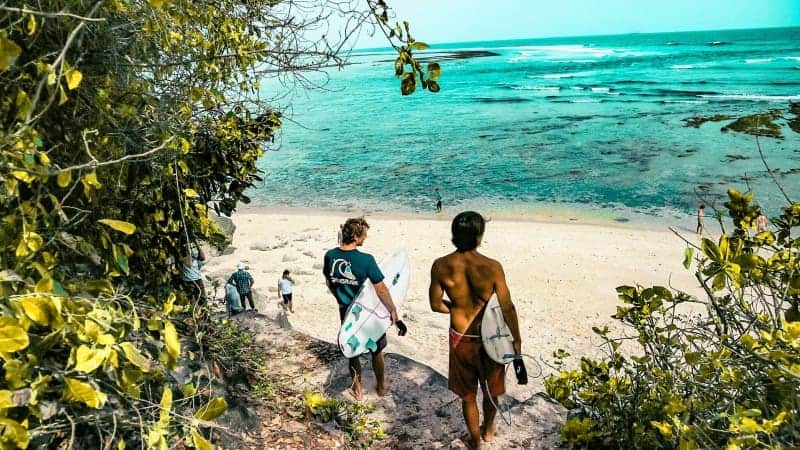
The beaches along the Caribbean coast tend to be more isolated and condensed, hidden behind thick vegetation that reaches the shore. They are ideal for leisurely walks, tanning, and finding peaceful areas to take in the greenest surroundings you have ever seen. The calm and clear seas along the Caribbean coast are well known for being perfect for snorkeling and discovering colorful coral reefs and marine life.
Diving on both coasts is a no-brainer as they are excellent and provide very different experiences. While the Caribbean side is home to vast coral reefs and an unparalleled opportunity to explore underwater ecosystems, the Pacific coast offers volcanic structures, caverns, and underwater rock formations.
Wildlife and Natural Diversity
For those who enjoy the outdoors and wildlife, Costa Rica’s two coasts provide plenty of possibilities to do so. Both regions are home to lush rainforests, national parks, and wildlife refuges that harbor a staggering variety of flora and fauna that can be spotted through nature walks, jungle treks, boat tours along the coast’s rivers, and other countless outdoor activities. Probably the main difference between the two coasts is that on the Pacific coast, there are more national parks, wildlife refuges, protected areas, and forest reserves than on the Caribbean coast.
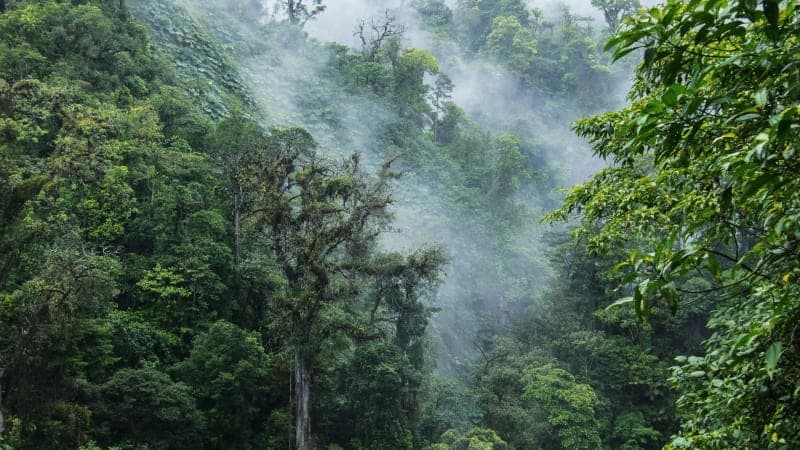
Cultural Influences
The cultural influences on Costa Rica’s Pacific and Caribbean coasts are quite different from one another, enhancing the social structure of this beautiful country and enriching the travel experiences of visitors.
The mestizo culture, a blend of indigenous and Spanish roots, has a strong influence on the Pacific coast, while the Caribbean coast exhibits a lively Afro-Caribbean culture shaped by the ancestors of African slaves who arrived in the area centuries ago.
Subscribe to our newsletter
to stay up to date
Accessibility and Transportation
The Costa Rican Pacific and Caribbean coasts differ significantly in terms of transportation and accessibility.
Even when several towns on the Caribbean coast are accessible by road, some specific locations may be more difficult to reach due to their isolated and pristine nature, requiring the use of alternative modes of transportation. For example, take a boat from the port of Limón to get to Tortuguero. On the other hand, tourists also have access to various places in the Caribbean through small plane flights.
A more developed infrastructure on the Pacific coast provides easy access for travelers to explore all its wonders. The major towns and tourist attractions along this area are well connected by paved roads, making it simple to travel by rental car, private transportation, or public transportation. In addition, there are two airports in the area, one in Liberia and another in Quepos, which offer options for those who prefer to fly.
Tourist Infrastructure and Development
A great differentiator between the Caribbean and Pacific coasts of Costa Rica is the tourist infrastructure and development.
The Pacific Coast offers a large variety of lodging (including extravagant resorts, boutique hotels, and eco-lodges), restaurants, and services because it has a highly developed tourist industry. The area has experienced significant growth, with tourist beach towns such as Jacó, Manuel Antonio, and Tamarindo. This region has its own international airport in Liberia, where tourists can land directly, which is an added benefit.
The Caribbean, on the other hand, offers a more laid-back and rustic atmosphere. Beachfront hotels, lodges, and cabanas are among the lodging options, but they usually have more modest sizes and designs. The Caribbean shore is developing at a slower rate, keeping its serene and genuine beauty. Visitors can eat at nearby establishments that serve international and Afro-Caribbean cuisine, frequently with fresh seafood and tropical flavors.
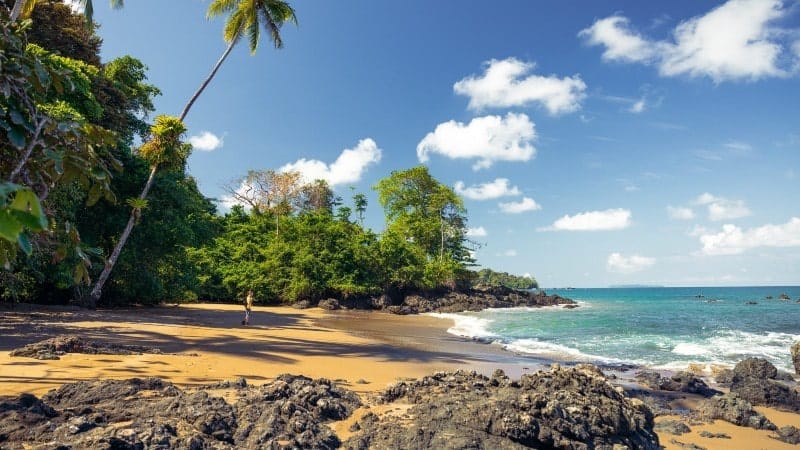
Unique Experiences and Top Activities
Adventure sports and tourist destinations are well-known along the Pacific coast. The area boasts beautiful national parks and other protected areas where visitors can enjoy wildlife observation, jungle walks, and stunning waterfalls. Exciting water sports like paddleboarding, sailing, surfing, scuba diving, kayaking, and jet skiing are some of the options available to fans of the water. Adrenaline junkies can also be satisfied with options like zip-lining over trees, whitewater rafting down raging rivers, ATV or horseback riding, and more.
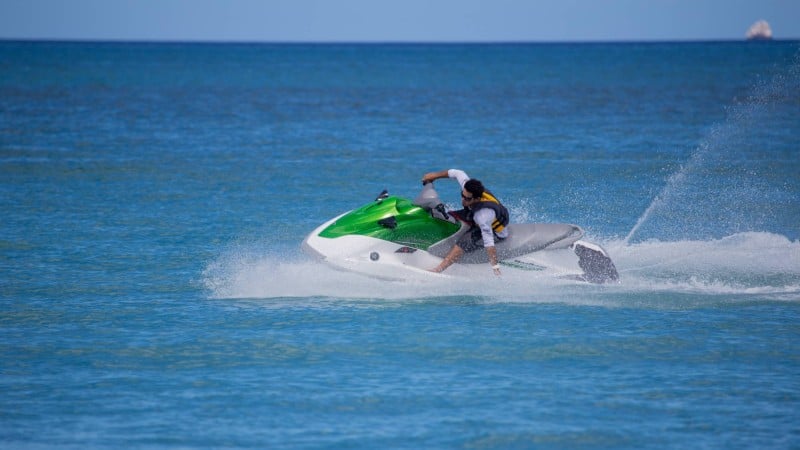
Visitors can experience the vibrant rhythms of reggae and calypso, savor delectable Afro-Caribbean food, and take part in cultural activities and festivals along the Caribbean coast, which focuses on cultural immersion and serenity. The area’s natural splendor, which includes immaculate beaches, peaceful mangroves, and vivid coral reefs, welcomes exploration and relaxation. Boat rides along winding canals are available for tourists to take in the native wildlife.
Top 5 Attractions on the Pacific Coast
Costa Rica’s Pacific coast offers a ton of incredible spots to explore, but the most noteworthy ones we suggest are:
#1
Manuel Antonio National Park
Situated on the Central Pacific Coast, Manuel Antonio National Park is a must-see attraction. Visitors can stroll through its fascinating paths, spot an abundance of wildlife, relax on its pristine beaches, or go snorkeling in clear waters.

#2
Tamarindo
The thriving coastal beach town of Tamarindo offers a combination of beautiful beaches, excellent surfing conditions, and an energetic atmosphere. There is no shortage of eating establishments, pubs, and shops that offer a lively nightlife.
#3
Marino Ballena National Park
Located in Uvita, this National Park is well known for its extraordinary sandbank formation that resembles a whale’s tail at low tide. With bright coral reefs and a variety of marine life to discover, the park is an ideal place for snorkeling, scuba diving, and seeing humpback whales during the migratory season (from half July to half November and from half December to April).
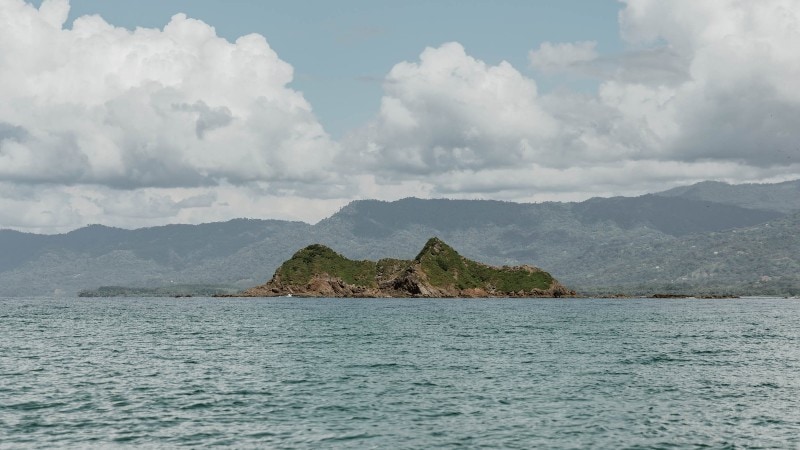
#4
The Nicoya Peninsula
The Nicoya Peninsula is a well-liked vacation spot renowned for its lovely beaches and relaxed environment. Towns like Santa Teresa, Mal Pais, and Montezuma feature great surfing conditions, yoga retreats, and a bohemian atmosphere.
#5
Corcovado National Park
Located in the Osa Peninsula, Corcovado is Costa Rica’s largest national park and “the most biologically intense area in the world when it comes to biodiversity,” according to National Geographic. This is undoubtedly a true gem of the Southern Pacific coast.
Top 5 Attractions on the Caribbean Coast
With several magical places to discover, here are the top five attractions on the Caribbean coast we recommend visiting:
#1
Tortuguero National Park
Wildlife lovers should take a special trip to Tortuguero National Park to see first-hand the nesting sites for green sea turtles. Monkeys, sloths, and various species of colorful birds are among the wide range of animals that call this park home.
#2
Cahuita National Park
The pristine coral reefs and diverse marine life of Cahuita National Park make it a top destination for snorkeling and scuba diving. Visitors to the park can walk along the beach and through lush tropical vegetation on its coastal path.
#3
Puerto Viejo
Puerto Viejo is a vibrant beach town with a laid-back Caribbean vibe, renowned for its mouthwatering Caribbean cuisine, surfing, and surrounding jungle paths to explore. Playa Cocles and Playa Chiquita are just two of the town’s stunning beaches where visitors may unwind, swim, and enjoy the sunshine.
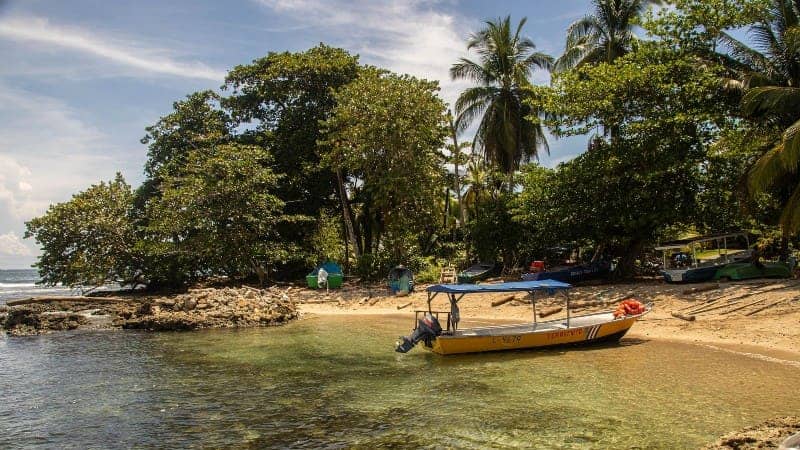
#4
Gandoca-Manzanillo Wildlife refuge
A distinctive view of Costa Rica’s coastal rainforest can be found in this protected area. Hiking the trails allows visitors to see a variety of animals, including monkeys, sloths, toucans, and poison dart frogs, among others.
#5
La Amistad International Park
This UNESCO World Heritage Site stretches over both the Caribbean and Pacific coasts. The park features remarkable biodiversity and is one of the largest protected areas in Central America. Visitors are able to venture into the virgin rainforest, explore the vast path network, and find amazing waterfalls.
Your preferences and interests will eventually determine whether you choose the Pacific or Caribbean side of Costa Rica. The Pacific coast can be ideal if you’re looking for adventure, surfing, and lively nightlife. On the other side, the Caribbean coast will charm you if you yearn for a relaxed atmosphere, lush jungles, and a distinctive cultural experience. Consider all the factors exposed here and the overall vibe you desire when making your decision. Both the Pacific and Caribbean coasts of Costa Rica provide amazing experiences, breathtaking scenery, and welcoming locals, making them worthwhile travel choices.
Pacific vs. Caribbean Side of Costa Rica: Which Is Best?
Once you make your choice, if you decide on the Pacific Coast, browse our rentals to find the perfect place to stay in Costa Rica!
Subscribe to our newsletter
to stay up to date


